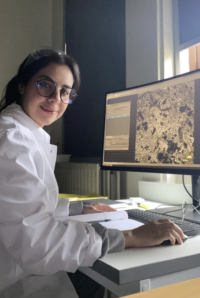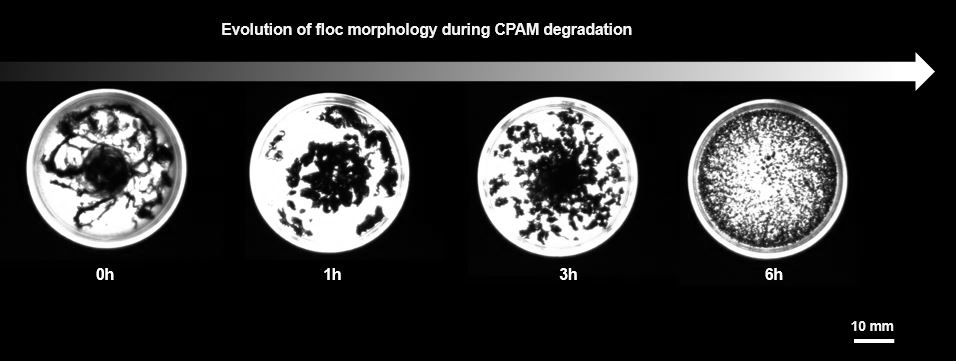- Share
- Share on Facebook
- Share on X
- Share on LinkedIn
Thesis defence
On September 29, 2025
Saint-Martin-d'Hères - Domaine universitaire

Multiscale Physical Characterization of Flocculated Systems for Eco-Efficient Water Treatment
In wastewater treatment, high molecular weight cationic polyacrylamides (CPAM) are widely used as flocculants due to their ability to form robust flocs and enhance both sludge thickening and dewatering. However, optimizing flocculation remains a major challenge, with significant financial, operational, and environmental implications. In this context, this study investigates flocculation mechanisms by examining the interplay between CPAM rheology and floc properties, including formation, morphology, and physical behavior, with the aim of anticipating their performance in sludge thickening and dewatering. This work demonstrates that CPAM are susceptible to degradation upon contact with metallic surfaces such as aluminum and stainless steel. This conclusion is drawn from pronounced changes in CPAM rheological properties during measurements with metallic Couette tools, where a shift from elastic to viscous behavior is evident. The low-shear viscosity drops drastically over time by several orders of magnitude, and the reptation time similarly decreases during this process. The second part of the study highlights the impact of this degradation on flocculation dynamics, as it shortens the sludge–polymer mixing time, accelerates the kinetics of floc structuring, and alters floc morphology. The flocs evolve from an initially branched and filamentous network to a more isotropic and dispersed structure, accompanied by a gradual reduction in size. Moreover, this mechanism significantly reduces the polymer dosage required to achieve complete flocculation. Beyond flocculation, the third part explores the influence of CPAM degradation on sludge thickening and dewatering applications. The results reveal that this phenomenon disrupts floc thickening, compromises solid–liquid separation, and reduces clarification efficiency, yet under pressure it enhances sludge permeability, thereby facilitating water release and improving dewatering performance. In conclusion, this thesis establishes a synergy between the rheological properties of CPAM, the flocculation mechanisms, and the physical characteristics of the resulting flocs. These findings provide novel insights into the origins of variability in flocculation performance and offer valuable guidance for operational strategies to improve wastewater treatment at the industrial scale.

Membres du jury
M. Yahya RHARBI
CHARGÉ DE RECHERCHE, CNRS, Directeur de thèse
M. Jean-Charles MAJESTÉ
PROFESSEUR DES UNIVERSITÉS, Université Jean Monnet, Rapporteur
Mme Cécile FORMOSA
CHARGÉE DE RECHERCHE, TBI - INSA Toulouse, Rapporteure
M. Pierre-Xavier THIVEL
PROFESSEUR DES UNIVERSITÉS, Université Grenoble Alpes, Examinateur
Membres invités
Mme Nadia EL KISSI - DIRECTRICE DE RECHERCHE, CNRS
Mme Sabrina GUÉRIN - DIRECTRICE INNOVATION, SIAAP
M. Laurent JOSSIC - MAÎTRE DE CONFÉRENCES, Grenoble INP
M. Pascal GINISTY - DIRECTEUR SCIENTIFIQUE, IFTS
M. Yannick FAYOLLE - INGÉNIEUR DE RECHERCHE, INRAE
Date
14h30
Localisation
Saint-Martin-d'Hères - Domaine universitaire
Maison du Doctorat Jean Kuntzmann (1ᵉʳ étage), 110 rue de la Chimie, 38400 Saint-Martin-d’Hères, Campus universitaire de Grenoble.
- Share
- Share on Facebook
- Share on X
- Share on LinkedIn